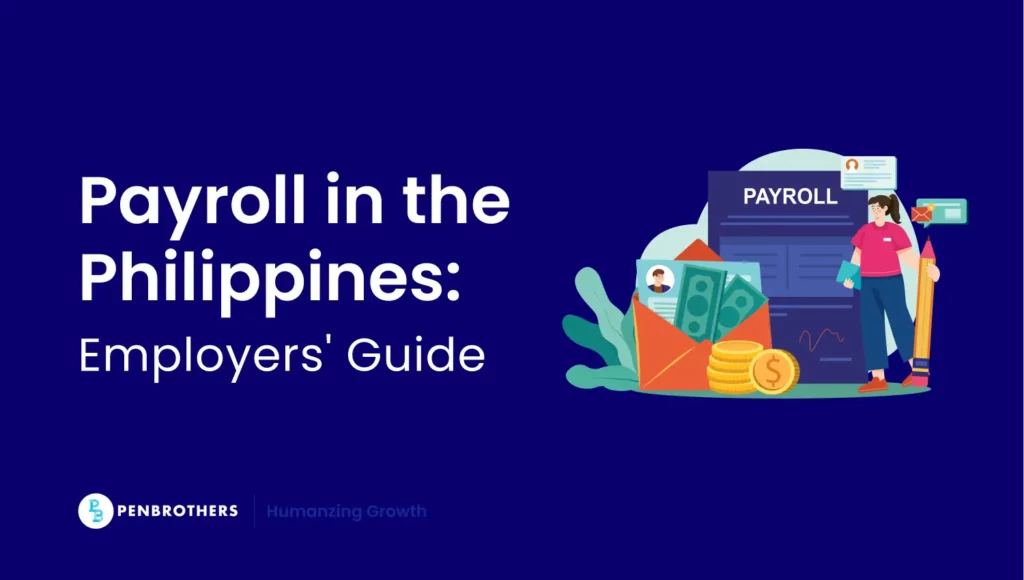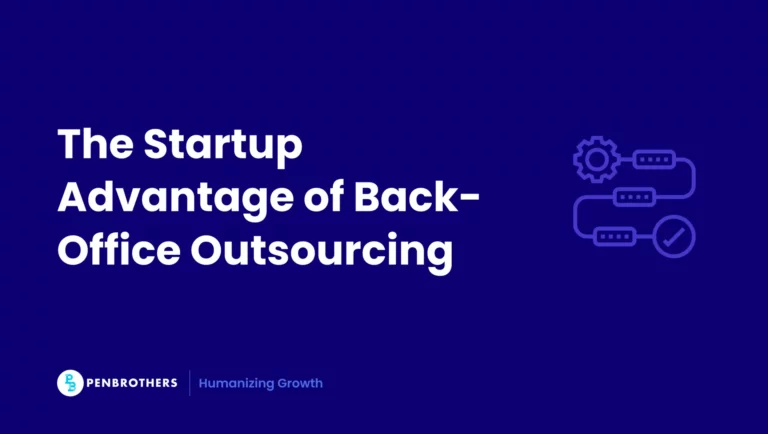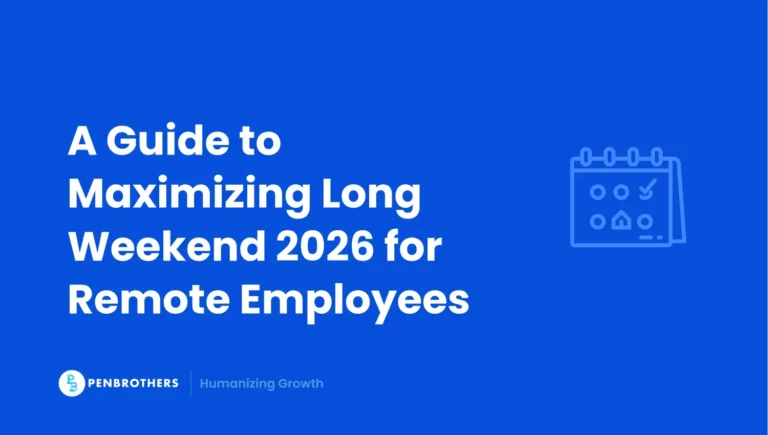One of the most essential HR functions is payroll management. Its time sensitivity requires companies to allocate time and resources to carry out such a task.
Companies often experience common pain points in payroll management. Compliance with the taxation systems is one of the most common issues they face.
The ever-changing labor laws make it challenging for companies to follow. Other challenges include keeping up with market rates, pay equity, and transparency, as well as complex compensation structures.
For that, read through today’s guide on salaries and taxation in the Philippines to learn about the relevant laws and regulations for compliance. This also covers the processes necessary to build an internal payroll system and ensure the proper remittance of both corporate and individual income taxes to the authorities.
Key Takeaways
- Semi-Monthly Pay is the Standard: The most critical aspect of the payroll schedule in the Philippines is that employees are paid semi-monthly, typically on the 15th and 30th of each month. This is a legal and strong cultural expectation that differs from the monthly schedules common in other countries.
- 13th Month Pay is a Mandatory Benefit: A key component of employee compensation is the legally mandated 13th-month pay. This is a bonus equivalent to one month of an employee’s basic salary and must be paid by December 24th of each year.
- Employers Act as Withholding Agents for Taxes: Employers are legally required to be withholding agents for the government. This means they are responsible for calculating, deducting, and remitting their employees’ income taxes to the Bureau of Internal Revenue (BIR) based on a progressive tax bracket system.
- Total Labor Cost is 27-33% Higher Than Base Salary: The true cost of employing someone in the Philippines is significantly more than their base salary. Businesses must budget for an additional 27-33% on top of the base pay to cover mandatory employer contributions for 13th-month pay, SSS, PhilHealth, and Pag-IBIG.
How Much Do Average Filipinos Earn?
As per a reliable offshoring calculator, a data entry specialist in the Philippines earns an average of USD 9,800 annually, which is 74% less than what an American hire receives. This makes the monthly salary in the Philippines an average of US$816.64.
However, this rate is also dependent on the industry in which one works. In 2025, workers in the following roles were paid the highest rates:
| Industry | Monthly Base Salary in the Philippines (USD) | Monthly Base Salary in the US (USD) |
| Full Stack Developers | 1,900 to 3,800 | 9,000 to 12,000 |
| SEO Specialists | 1,600 to 1,900 | 7,000 to 9,000 |
| Data Entry Associate | 600 to 700 | 4,000 to 5,000 |
| IT Project Managers | 1,400 to 2,600 | 9,000 to 12,000 |
| Copywriters | 1,200 to 1,600 | 6,500 to 8,500 |
If you want to know and compare the salaries in the Philippines, you may use this transparent and reliable salary calculator.
This covers incentives, but is not limited to 13th-month pay and mid-year bonuses. The 13th-month bonus pay is a mandatory incentive paid to employees before the 24th of December or before the end of the contract date. This is equivalent to a month’s salary.
What is the Payroll Schedule in the Philippines?
You’re expected to pay at least twice a month, typically on the 15th and 30th, but here’s what most miss:
- “Bi-weekly” isn’t the same as “semi-monthly,” and mixing them up throws off contribution schedules
- Holiday cutoffs, banking delays, and unposted PhilHealth reports can delay everything without warning
- Labor Code Article 103 mandates that employees be paid within 7 days of the end of the pay period
Mess with the timing, and you risk legal headaches, low Glassdoor scores, and churn you can’t reverse.
How to Compute Payroll in the Philippines
Payroll errors aren’t just about lost trust. They’re about non-compliance. If your spreadsheet misses one holiday pay line, you can face a DOLE inquiry.
A semi-monthly computation example:
- Base salary: ₱30,000/month → ₱15,000 per cutoff
- Deductions: Statutory + tax = ₱4,500–₱6,000 (varies)
- Inclusions: OT, night diff, holiday premium, 13th month accrual
- Net Pay: ~₱9,000–₱10,000 per cutoff
If your HRIS isn’t tailored for PH law, it won’t flag half-month pro-ration, holiday compliance, or shifting minimum wage brackets.
When Do People Get Paid, and Are Taxes Withheld Automatically?
Unlike other countries where payday comes only once a month, Filipino employees typically get their pay on the 15th and 30th of every month.
The schedule of withholding taxes from salaries depends on the payroll structure of the company. Employers must act as withholding agents by deducting income taxes from their employees’ monthly salaries.
The Philippine government has six income brackets depending on the employees’ annual salaries:
- ₱0 to ₱250,000: 0%
- ₱250,001 to ₱400,000: 15%
- ₱400,001 to ₱800,000: 20%
- ₱800,001 to ₱2,000,000: 25%
- ₱2,000,001 to ₱8,000,00: 30%
- Over ₱8,000,000: 35%
Why Pay Income Taxes in the Philippines?
Foreign companies are encouraged to comply with Philippine taxation laws, as it boosts their credibility. This is crucial if they wish to operate within the country.
As per Republic Act No. 9337, foreign companies operating in the Philippines are subject to an income tax equal to around 30% of their taxable income from the preceding fiscal year.
The minimum gross income tax the Philippine Bureau of Internal Revenue (BIR) can charge foreign companies is 2%. It also depends on both annual total income and the industry of affiliation.
How Much is the Withholding Tax from an Employee’s Paycheck?
The National Tax Research Center provides a general overview of taxes withheld and other necessary deductions, such as contributions to the Social Security System (SSS) and PhilHealth, the public health fund.
You may also compare figures using the BIR Philippines income tax calculator, which shows the amount taxed from either one’s monthly or annual income.
Tip: Check out the BIR’s standardized salary tax table online.
There are, however, several compensatory measures that are exempt from taxes. These include:
- The mandatory 13th-month pay (usually equivalent to a month’s gross salary) is given at the end of the year;
- Cost of any remuneration paid to an employee in the event of work-related incidents and/or illness and hospitalization;
- Life and/or group insurance; and
- Any bonuses awarded to an employee in recognition of exceptional performance, the attainment of specific corporate goals or targets, commencement of employment with a company, and promotions.
Important Notes for Foreign Workers In the Philippines
Note that this does not apply to foreign workers assigned to the Philippines. In general, around 25% of the total amount earned monthly is withheld from an employee’s wages.
However, this may also change depending on a foreign employee’s country of origin or the country where the company was incorporated and/or serves as its primary base of operations.
The Benefits of Withholding Taxes
Most Filipino employees rely on their employers to automatically deduct their taxes and subsequently file them with the BIR. This ensures that they don’t miss out on paying their taxes on time.
On the employers’ end, automatically withholding taxes ensures that they steer clear of delinquencies, and it reduces the cost of collection efforts.
This applies to corporations in different industries, both domestic and foreign, which operate in the Philippines, regardless of whether these are involved in offshoring or outsourcing.
How to Set Up Your Payroll in the Philippines
For foreign companies that wish to operate in the Philippines, this is how you set up your payroll system.
For any company—foreign or domestic—the following process is mandatory to ensure compliance and reinforce a firm’s credibility.
- Establish the Business with the Relevant Philippine Authorities
To be recognized as a legitimate business conducting business in the Philippines, both foreign and domestic firms are required to register with both the BIR and the Securities and Exchange Commission (SEC.)
This allows companies to pay tax online in the Philippines via ePay or through any recognized online channels.
- Internally Set Your Standard Payment Policy and Process
This involves more than just establishing a pay schedule and a scale of fees. A standard process requires the following:
- Pay schedule;
- Employee classification (Part-time, full-time, contractual, consultatory, etc.);
- Employee benefits;
- Taxation and government-mandated deductions;
- Payroll automation (whether or not you should use Excel to compute and process your payroll or use other digital automation tools such as a payroll tax calculator attuned to the Philippines); and
- Pay disbursement method (whether you should distribute physical pay packets, checks, or directly deposit an employee’s wages into an assigned account in the company’s bank of choice.)
- Set Your Standard Pay and Taxation Scales
On top of standard compensation and deductions, considerations should also be made for compensation in the following events:
- Illness or parenthood
- Paid sick leave
- Vacation leave
- Mandatory thirteenth-month pay
- Night differentials
- Retirement pensions
- Social security
- Health insurance
- Holiday allowance
- Non-taxable benefits
- Holiday pay
- Overtime pay
- Distribute the Necessary Forms to Compile Employee Information
Employers are required to file electronically for tax exemption of their new employees using the BIR form 2305. This ensures the timely deduction and remittance of their taxes to the Bureau.
- Check the Records for Time at Work to Compute Compensation
Keeping a standard record of employee time at work through either digital attendance systems or analog Bundy clocks and logbooks is necessary for the computation of their wages.
- Disburse Payment
This may be done through physical disbursement or direct deposit to individual accounts. A payslip must be provided either physically or through email.
- Retain Records of All Compensatory Actions
Employers must keep track of the following compensatory actions as required by local governing laws:
- Direct Deposit Details
- Employee Information
- Deductions
- Time Sheets
- Leave Records
- Reimbursement forms
- Tax documents
- Incentives
Keeping track of this list of information will help you gauge if your chosen offshoring partner treats your offshore team fairly, and if they are indeed compliant with local governing labor laws.
What is the Labor Cost of Payroll?
The labor cost of payroll in the Philippines goes beyond the base salary. As an employer, your true cost per hire includes statutory contributions, compliance overhead, and indirect expenses like software, payroll admin, and the cost of fixing errors if you’re doing things in-house.
To give you a clear picture, here’s a simplified breakdown for a typical full-time Filipino employee earning ₱35,000 per month (approx. $615 USD):
| Cost Component | Approximate Monthly Amount |
|---|---|
| Base Salary | ₱35,000 |
| 13th Month Pay (Amortized Monthly) | ₱2,916.67 |
| SSS Employer Share | ₱2,520 |
| PhilHealth Employer Share | ₱1,050 |
| Pag-IBIG Employer Share | ₱100 |
| Admin / Compliance (est. in-house) | ₱3,000–₱5,000 |
| Estimated Labor Cost (Monthly) | ₱44,586.67–₱46,586.67 |
That’s 27–33% on top of salary, and that’s assuming everything’s done right the first time. The real labor cost is what it takes to hire, retain, and pay talent without breaking local rules. That’s why founders and global HR teams often underestimate the true cost of payroll until something breaks.
If you’re offshoring or hiring remote Filipino staff, these costs aren’t optional. They’re your baseline for compliant, ethical employment. A strategic partner can help you streamline these without risking penalties or burnout.
Find a Compliant Offshoring Partner
The intricacy of the payroll and taxation processes in the Philippines can be taxing and overwhelming. That is why finding the right offshoring partner is a sustainable direction to go, should they wish to expand their operations here.
Choosing a trusted offshore partner will cover all your bases in payroll, taxation, and compliance. They will manage payroll and compliance for you so that you can focus on the revenue-generating side of your business.
Frequently Asked Questions
Employees in the Philippines are paid semi-monthly, which means twice a month. The most common pay dates are the 15th and the 30th (or the last day) of the month.
13th-month pay is a legally mandated benefit in the Philippines that is equivalent to one month of an employee’s basic salary. Employers are required to pay it to all rank-and-file employees on or before December 24th of each year.
Yes. Employers in the Philippines must act as withholding agents for the Bureau of Internal Revenue (BIR). They are legally responsible for calculating and deducting the correct income tax from their employees’ salaries each pay period and remitting it to the government.
A company should budget for approximately 27% to 33% on top of an employee’s base salary. This additional amount covers mandatory employer contributions for benefits such as 13th-month pay, Social Security System (SSS), PhilHealth, and Pag-IBIG, as well as other administrative costs.
The primary steps include legally registering the business with the Bureau of Internal Revenue (BIR) and the Securities and Exchange Commission (SEC), establishing internal payment policies and pay scales that include all mandatory benefits, compiling employee information using the correct government forms, and implementing a system to track time, compute pay, and disburse salaries with payslips.






